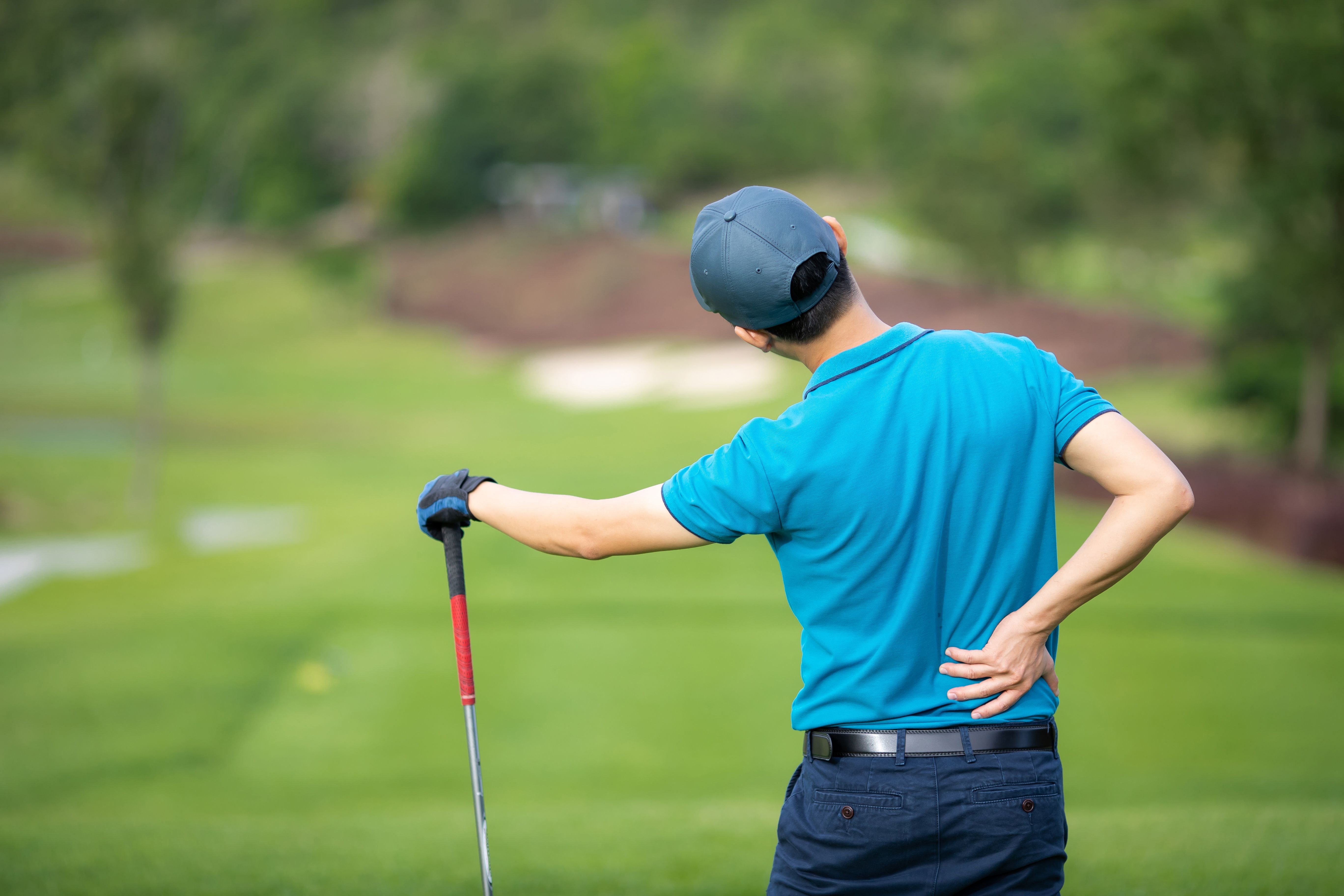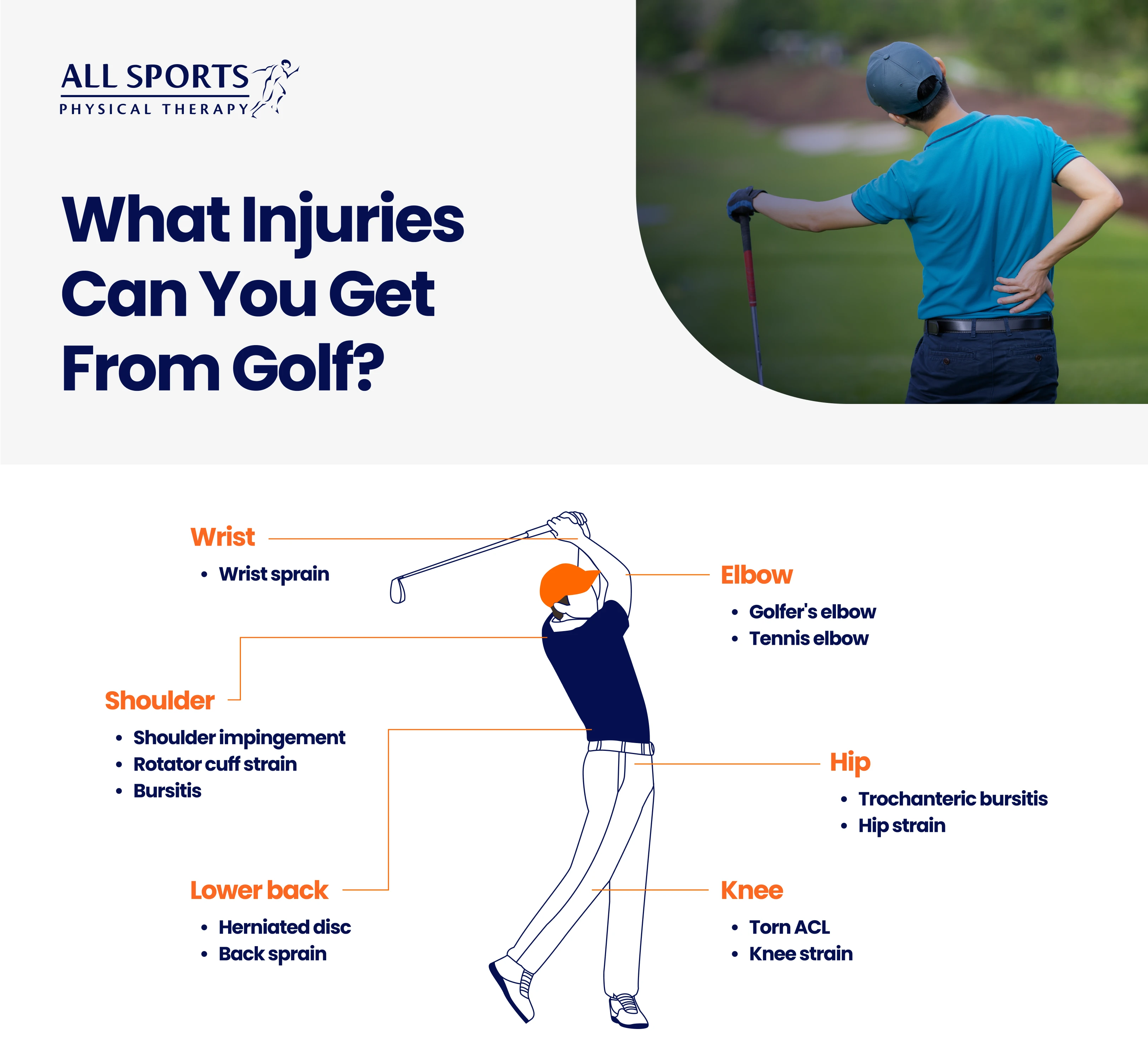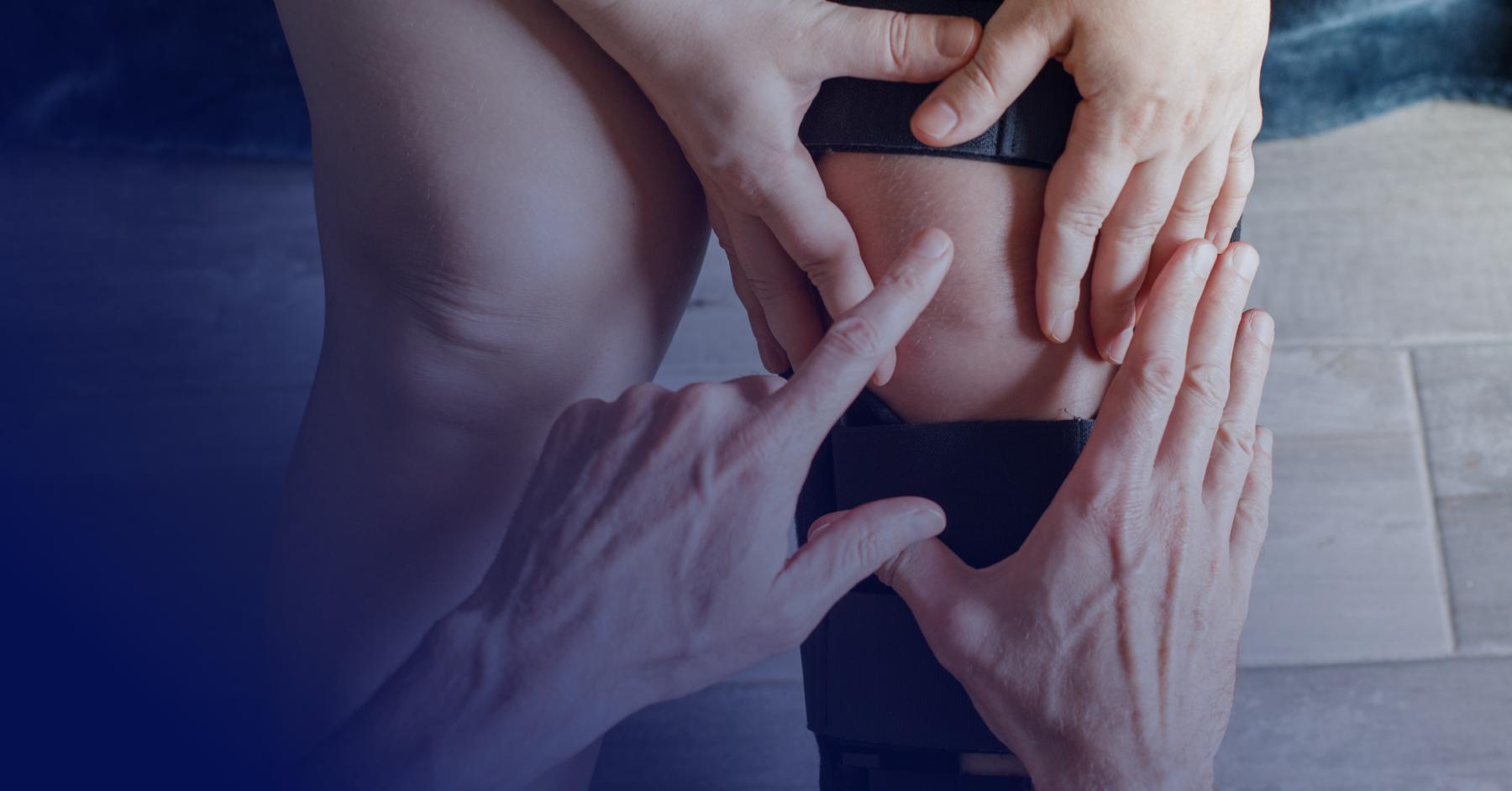What Injuries Can You Get From Golf?
Workout Injuries

Think you can’t get injured playing golf? Think again.
Golfing is one of the most popular sports in the U.S., and it’s easy to see why. Not only do participants get physical benefits, but they’re playing outdoors in the sunshine with other people, making it a calming, relaxing, and social experience. Although a low-impact sport, the wear and tear golf’s repetitive movements take on the body can result in golfing injuries.
According to the National Golf Foundation, 26.6 million people took to the links in 2023, an increase of 2.4 million since 2018. To enjoy this growing sport, you’ll want to prevent injuries as best as possible. So, let’s review common golf injuries and potential treatments you may need if an injury is keeping you off the course.
The most common golf injuries by joint

Much of the injuries related to golf stem from the repetitive motion of swinging a golf club repeatedly. When you swing a golf club, your whole body from the ankle to the shoulders feels the torque, which takes a toll on specific joints in the body, including:
The elbow. The backswing and follow-through involve bending and straightening the elbow, leading to what is known as golfer’s elbow, or inflammation of the inner tendons of the joint. Tennis elbow, which is an inflammation of the outer tendons of the elbow, is also common.
The lower back. The twisting action of a golf swing can strain the lower back, especially if your hips and lumbar spine have limited mobility. This can lead to a herniated disc or a sprain of the ligaments in the lower back.
The shoulder. Swinging a golf club puts pressure on the shoulder joint and ligaments. As a result, golfers often suffer shoulder impingement or pain in the front of the shoulder joint. Other shoulder-related injuries include rotator cuff strains and tears as well as bursitis.
The hips. Much of the power of a golf swing comes from the rotation of the hips, which can result in injuries to the joint. Among those are trochanteric bursitis, or an inflammation of the bursa along the outer part of the hips, as well as straining of the cartilage around the hip joint.
The wrist. The ligaments around the wrist are vulnerable to sprains if you hit the ground hard during your follow-through.
The knee. Your knee also absorbs the strain of your golf swing. Therefore, tears to the ACL and meniscus in the knee are possible.
Treating golfing injuries
Treatment depends on the severity and type of injuries. But in general, therapy will take these five forms:
- Rest. Staying off the links until the pain subsides may be your best course of action.
- Medications. Anti-inflammatory medications or corticosteroid shots can ease the pain.
- Braces. Wearing a brace around the wrist or elbow gives the ligaments time to heal.
- Physical therapy. Any physical therapist can help you overcome injuries by bringing movement back to stiff or weak joints.
- Surgery. Surgery is rarely needed for golfing injuries. However, surgery may be recommended for severe injuries like rotator cuff tears and torn ACLs.
If pain lingers, see an orthopedist or physical therapist for further evaluation and treatment options. Since golf injuries can usually be traced to poor form, you can consult a golfing pro to perfect your swing. Additionally, remember to always warm up before hitting the golf course. It will help you avoid many of these common injuries.
Never miss a round of golf
Whether you’re feeling pain after a golf game or just want to up your game, you can count on the physical therapists at All Sports Physical Therapy to help you feel your best. Our goal is not only to make you pain-free but to instruct you on how to keep your body healthy in the long run. Contact us today for a consultation.



